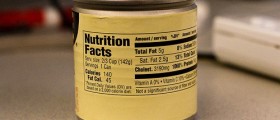
Definition
Coronary heart disease (CHD) is caused by fatty deposits built up on the inner walls of coronary arteries. These deposits are prevalently made of cholesterol and they are called "atheroma". When atheroma occur inside mentioned blood vessels, they stop or decrease the undisturbed blood flow inside arteries and this process is called atherosclerosis.
Risks
There are many risk factors that can significantly increase the chance of developing atheroma. Smoking, high blood cholesterol level, high blood pressure, lack of exercise, thrombosis, high body mass index (obesity), diabetes or inheritance factors are amongst them. It is important to mention that the chance of developing atherosclerosis rises with a presence of similar health conditions inside the closest family.
Cholesterol
Cholesterol is produced when ones liver processes fat we take through food. The presence of cholesterol is very important for healthy cells to function but high level of this substance will increase the risk of developing CHD. The molecules called lipoproteins carry the cholesterol through blood to destinations in your body (cells). There are two main types of lipoproteins; high density lipoproteins (HDL) or so-called "good cholesterol and low density lipoproteins (LDL) referred to as a "bad cholesterol".
The main difference between these two types of cholesterol is their route. HDL carries cholesterol from a liver to cells. LDL carries cholesterol from mentioned cells to a liver, where it's been broken down. On its way, LDL has a tendency to build up inside blood vessels, increasing the chance of developing atheromas. The key problem occurs when the level of LDL is too high, so HDL is not able to remove it thoroughly. More than 6mmol/liter is considered to be high cholesterol concentration in human blood and doctors advice their patients to keep this level below 5.
High blood pressure
High blood pressure is stressing and straining patient's heart, which can lead to developing CHD. There are systolic blood pressure and diastolic blood pressure. Systolic blood pressure is measured when the heart is in its most contracted phase and diastolic when the heart muscle is relaxed. Systolic pressure value of over 140mmHg and diastolic pressure value of over 90mmHg are considered to be high. This is called hypertension.
Smoking
This kind of behavior is one of major risk factors. The chemicals from the smoke called nicotine and carbon monoxide increase heart rate, putting it to higher strain and increase the chance of developing blood cloth.
Thrombosis
Thrombosis is a presence of a blood clot in ones artery or a vein. This blood clot will narrow the blood vessel and keep other blood cloths from passing, which, eventually, leads to a total blockage of an artery, increasing the chance of developing a heart attack.

















Your thoughts on this
Loading...